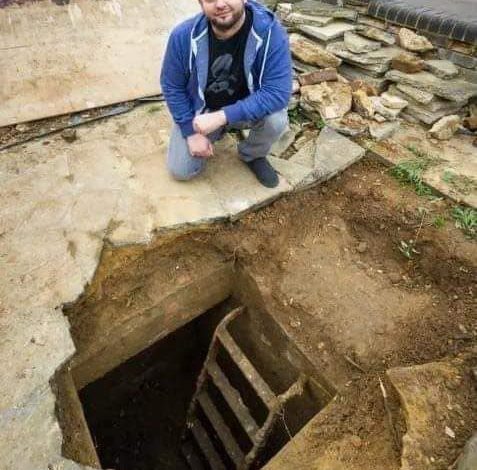
Simon Marks, 37, experienced an unexpected turn of events when he thought his car had driven onto a flowerbed, only to realize that he had stumbled upon a piece of history hidden beneath his driveway. As he inspected the damage caused to his car, a mysterious sound caught his attention, prompting him to investigate further.
Kneeling down to examine the cracks in the pavers of his driveway, Simon Marks witnessed a surprising sight: the ground beneath him began to give way. With an eerie sound, the pavers continued to crack, revealing a hidden secret.
Simon’s curiosity led him to uncover a piece of metal buried beneath the dirt. Although he initially attempted to retrieve it by hand, he soon realized that the object was firmly lodged.
Determined to unveil the mystery, Simon enlisted his father’s help. Together, they meticulously excavated the area, removing buckets of mud. Their efforts eventually revealed an opening, leading to a rusty ladder descending into the ground.
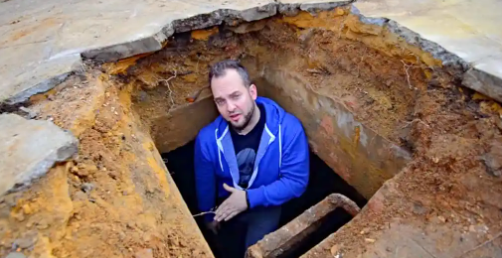
Descending the ladder, Simon and his father made an astonishing discovery. They found themselves in an air raid shelter—a relic from World War II. Research later confirmed that these underground shelters were constructed during the war as a means of protecting citizens from bombings and attacks.
Simon deduced that the shelter had been concealed over time, likely by a previous owner who filled it in while building the house and establishing a garden. One wall of the shelter had been bricked up, possibly during the house’s construction.
Reflecting on the find, Simon remarked, “If that’s the case, we’ll just have to leave it.” However, news of the discovery quickly spread.
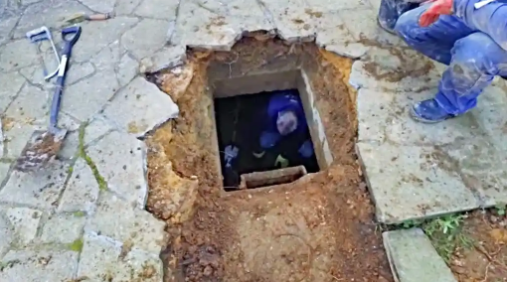
Preserving a Historical Relic
Simon and his father embarked on a journey to restore and preserve the air raid shelter. They believe that this piece of history should not be forgotten, as it serves as a tangible connection to the past. Despite the passage of time, they view the shelter as an important reminder of the challenging era of World War II.
Their aspiration is for the shelter to become a recognized historical monument, offering visitors a glimpse into a significant chapter of history. Through their efforts, Simon and his father hope to ensure that the sacrifices and struggles of the past are honored and remembered.
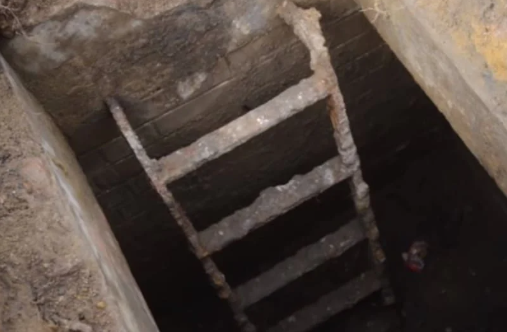
A Glimpse into History
The unexpected discovery of a WW2 air raid shelter beneath Simon Marks’ driveway serves as a testament to the enduring significance of historical artifacts. As Simon and his father work to restore and preserve the shelter, they remind us that the past should be cherished and commemorated.
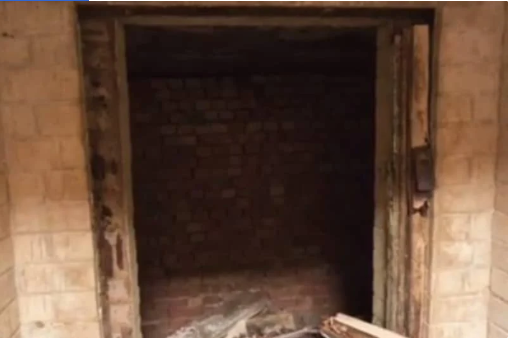
Watch the video tour of the shelter to witness this remarkable journey into the past.


